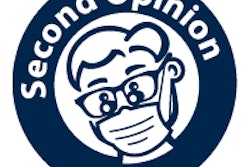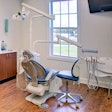
At some point in a dentist's career, the purchase or sale of a practice will become an issue to be considered. To enable the owner-dentist to become more savvy when dealing with other dentists, partnerships, and private equity firms when they show interest in acquiring your business, consultant Thomas Climo, PhD, offers the four methods of valuing dental practices.
This series of three articles will increase your knowledge of dental practice evaluation and the methods employed for valuing dental practices. The first two articles discussed percentage of prior-year sales and net income (the Warren Buffet approach).
Method 3: EBITDA approach (ignoring depreciation)
 Thomas Climo, PhD, is a dental practice management consultant and a past professor of economics in England.
Thomas Climo, PhD, is a dental practice management consultant and a past professor of economics in England.This method of valuation is favored by Wall Street and big money because their objective is to learn the value of the company from an operating point of view. Since they will buy only multiple practices and are loaded with available funding, the debt issue is moot as it is likely to be either eliminated on acquisition, or more suitable and cheaper debt found. Wall Street has little interest in the ability of a dental practice owner or dental practice management company to arrange and choose financing options. So, out goes interest and amortization. Taxes are a part of life, but, once again, Wall Street has more learned tax attorneys and tax accountants than dental practice owners, so little interest is retained in valuing the ability of the dental practice owner to reduce tax liability.
Wall Street also does not see depreciation as a cash flow expense, rather as an accounting construction that can be added back, which is in complete disagreement with the Warren Buffett method described in the last article.
If we assume the earnings before interest, taxes, depreciation, and amortization (EBITDA) margin is twice that of net income, the following result is found.
V = EBITDA (j) ÷ r
- V = Value of the dental practice
- EBITDA = Operating income before interest, taxes, depreciation, and amortization
- j = Date of the valuation (2014)
- r = Cost of capital of the "public/private equity" sector at 9.46% as of January 2014.
Method 3 evaluates practice No. 5 as $6 million x 12% = $720,000 ÷ 9.46% = $7.6 million.
In the economic trade, a valuation number below that for annual revenues and carrying a multiplier less than 1 is known as a negative multiplier. Method 1 was negative at 0.75, and method 2 at 0.63. Method 3 was positive at 1.27. The goal of any business is to create positive multipliers, but, under method 1 after having reviewed more than a thousand appraisals and selling prices, I can confirm not one positive multiplier was found for a dental practice.
There is something strange about an industry that purges profits in such a manner that a negative multiplier is the result. The "strangeness" would appear to be the lack of financial coordination between what the owner-dentist takes from the business in terms of remuneration contrasted with the remuneration called for from the actual profit made in the business. This lack of coordination is usually found in the balance sheet as an equity draw by the owner.
Each year the owner draws down and removes all the net income as either a bonus or salary payment to him/herself. In doing so, each following year becomes exactly that, another new year without any retained earnings or savings. When prior-year revenues less owner draws eliminate net income, and no provision is made for depreciation, the result is always a deterioration of the value of the business.
Method 4: Market Rate multiples
Method 4 is the current multiples rate in use in the public/private equity capital market. While the other three valuation methods express economic value, indirectly in the case of method 1, method 4 requires no theory, only the price currently being paid for dental practices that meet a private equity profile. This profile is usually at least four practices, EBITDA of $1 million and usually more, and an owner-dentist willing to continue as chief clinician and director of the practice for five to 10 years. The owner-dentist puts the sales price in his or her pocket, works at a handsome salary from the dental practice management company-private equity group (DPM-PEG) buyer, and is additionally compensated at some percentage of EBITDA not exceeding 20% on an annual basis. With annual EBITDA of $720,000, practice No. 5 is short of meeting profile criteria. It remains instructive, however, to carry on with practice No. 5 to help facilitate an understanding of this valuation method.
In methods 2 and 3, the cost of capital of 9.46% operated as the denominator against either net income (after depreciation) or EBITDA (ignoring depreciation) as numerator. In method 4, if the practice is wholly private pay, the multiple 6x EBITDA is the market rate; if the practice is wholly Medicaid, the multiple 3x EBITDA.
Mixes between private pay and EBITDA are treated on a pro-rata basis. The table below shows this method's valuation for practice No. 5 under a 100% private pay, a 50%:50% private pay to Medicaid ratio, and a 100% Medicaid.

Method 4 evaluates practice No. 5 as $720,000 x 6 or x 3 or as a mix of 6 and 3 = $2.2 million to $4.3 million
The findings of our valuation for practice No. 5 are summarized in this last table:

In dental practice evaluation, you choose your poison. Method 1 seriously devalues practice No. 5 compared with method 3, while providing a similar valuation as methods 2 and 4a.
Method 2 is the conservative approach as it takes seriously the issue of owner continuity and capital maintenance or depreciation. Method 3 is every owner-dentist's dream -- a positive multiplier on valuation against revenues, here at 1.27.
Method 4 looks to have it right. If you are a wholly Medicaid practice, owing to perceived risk and the ability of the state to turn off the revenue spigot at any time, practice No. 5 receives its lowest valuation. If you are half private pay and half Medicaid, the valuation bumps up, but doesn't reach the valuation of a wholly private pay practice of $4.32 million. In this instance, your author's declarations to the contrary, methods 1 and 4 are probably in the right ballpark regarding the valuation of practice No. 5, although method 2 is not that far off.
The preference for method 4 is that unlike method 1 where methods 2 and 4 are needed for confirmation, and where luck has as much to do with the similar valuation of method 1 with method 4 than economic rationale, method 4 stands alone as the going rate for dental practices in a private equity market where certain criteria are met.1
Where the buyer-seller are both solo practitioners, I'd run with method 2. Method 3 is a wet and wild ride, and your use or acceptance of this valuation is at your own peril and risk.
1 As to the preference for method 4, provided certain criteria are met, it is hard to beat a market price whether you are inquiring the current price of tomatoes, Hondas, or dental practices. No other valuation method can best that. Still, the formula 6x EBITDA and 3x EBITDA can change in a New York minute. Method 4 requires vigilance over market practices and pricing.
Note: The reader is invited to change the net income and EBITDA margins in the illustration that followed analysis and valuation of practice No.5. The higher the margins move, the more likely that positive and not negative multipliers will be achieved with a valuation number outstripping prior year revenues. 6% and 12% net income and EBITDA margins are too low as indicators of performance for a positive multiplier to result. Try 15% and 21% -- the margins for net income and EBITDA I use in my white paper ("Standardizing the financial reporting of dental practices," January 29, 2013) and watch positive multipliers emerge for the valuation methods with the exception of method 1, which may reach 1.0 but no higher, and methods 4b and 4c in which Medicaid accounts for half or all of a practice's revenues.
Some readers of this valuation article may be unfamiliar with use of the abbreviated perpetuity formula used herein, being more familiar with discounted present value and its formula:

Where "C" stands for either EBITDA or net income," j" is the date of valuation, "r" is the cost of capital, and "n" is the number of years quantified. However, when "C" is the same number every year -- which is what repeatability means -- this formula mathematically reduces itself to the perpetuity formula:
V = Cj ÷ r
Thomas Climo, PhD, is a professor emeritus of accounting and finance at a major university in the U.K. He has published extensively about the importance of modern managerial and financial decision-making for dentistry. He is a consultant to corporate and solo practitioner dental practice management companies in the states of Arizona, California, Connecticut, Nevada, New Hampshire, New York, and Massachusetts. He can be reached by email at [email protected] or by telephone at 702-578-2757.
The comments and observations expressed herein do not necessarily reflect the opinions of DrBicuspid.com, nor should they be construed as an endorsement or admonishment of any particular idea, vendor, or organization.



















